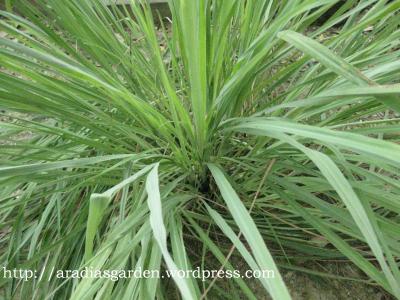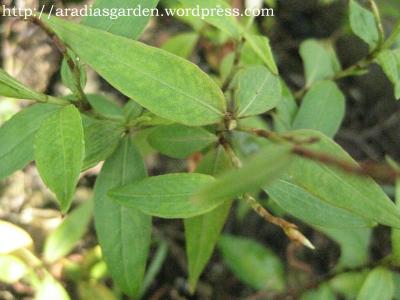Leaves of the Gods?
May 24, 2011
There were many claims that this magical herb has remarkable benefits, though I myself have yet to try it. Our family received the plant as a gift from a relative in Brunei many years ago, who informed us that the herb is called Sambung Nyawa. It grows and can be cultivated quite easily. I have heard people talking about it all these while but I wasn’t sure whether it is the same plant, so I did a little checking. I’m guessing it is the same one. The other names for this herb include Daun Dewa, Akar Sebiak, Kelemai Merah, Mollucan Spinach, Longevity Spinach, Googoolipid, Bai Bing Ca, Nan Fei Ye and Scrambling Gynura. The scientific name for it is Gynura procumbens.
Then, there was another family friend who gave another plant which he claimed to have tremendous benefits to health, especially for people who have high blood pressure, diabetes, cancer and a few other ailments. The leaves look slightly similar to the ones shown above, but unlike the ones above, this plant can grow quite high, as shown in the images below:
Cekur
May 16, 2011
Opps! I haven’t been taking good care of my cekur, it has not grown beautifully. I have it in my garden for quite some time already but haven’t got the chance to utilize it. It is said to be very bitter.
For those who read and understand Bahasa Malaysia, you may find some important details on this herbaceous plant on this page: Cekur Legakan Penyakit
Hempedu Bumi
March 13, 2010
Puding
March 12, 2010
Misai Kucing
March 11, 2010
I have heard about the beneficial usage of this herb, but so far I have not try it yet. I like the look of the flower, so I treat it as an ornamental plant in my garden.
We can absorb the goodness of this herb by steeping the leaves in hot water (to release the nutrients) and then after the mixture has cooled down, throw away the leaves and drink the brew. It can treat kidney problems, stones, diabetes, high-blood pressure and a few other diseases.
Ulam Raja
March 10, 2010
The scientific name of this herb is Cosmos caudatus. It is commonly taken as salad. Some people believe it is good for awet muda (maintaining a youthful feature).
Sirih
March 9, 2010
I bruised easily when I was a kid. That’s because I was a hyper-active kid. I remember my mother used to pluck some sirih leaves, passed them over a candle flame and then applied the leaves on the bruised area to expedite healing process.
Sometimes I add the leaves into my bath water for a refreshing cleansing ritual. It has antiseptic properties and is suitable for vaginal douching.
The scientific name for this wonderful herb is Piper betle L.
Serai Wangi
March 8, 2010
This variety of the serai is aromatic and believes to be able to ward off mosquitoes.
The leaves if boiled in a pan of water, once the water has cooled down, can be used as bath water to eliminate body odor. This bath water is also good for women after the confinement period. It can assist in removing wind from the body.
Daun Kesum
March 3, 2010
Kacang Botol
March 1, 2010
This crawling vegetable / herb is commonly known as kacang botol in my country. The binomial name for it would be Psophocarpus tetragonolobus.
One of my favorite dishes includes the Kacang Botol Goreng Belacan. It can be eaten as ulam / salad as well.
Other names for it include winged bean, kacang kelisa, su ling dou (China), goa bean (India), kecipir (Indonesia), sikakumame (Japan), sigarilyas (the Philippines), dara dhambala (Sri Lanka) and thua pu (Thailand).
Pegaga / Gotu Kola
February 13, 2010
Its botanical name is Centella Asiatica. In my country, it is commonly taken as salad / ulam.
Many believed that one of the benefits for taking this herb is awet muda, which means it can assist us in maintaining a youthful feature. I have been taking this herb since a decade ago. Actually, I was forced to take it. I knew it could be good for me but I really disliked the bitter taste back then.
Most people commented that I look much younger than my true age. Hmmm, I wonder if the herb has anything to do with that. If you wish to slow down the aging process, why not try this herb or other herbs which are rich in anti-oxidants? Taken in a moderate amount, herbs are pretty much harmless.
Aloe Vera
January 10, 2010
I think every garden should have at least one or two of this healing plant. While the juice may be bitter, it is beneficial for the treatment of stomach ulser and kidney problem. Other than that, the juice (combined with rock sugar and ice cubes) has a cooling effect on the body.
Applied to skin, the gel relieves minor burns and skin disorders.
I apply aloe vera gel on my eyelashes nightly; there is no need for eyelash curler!


















